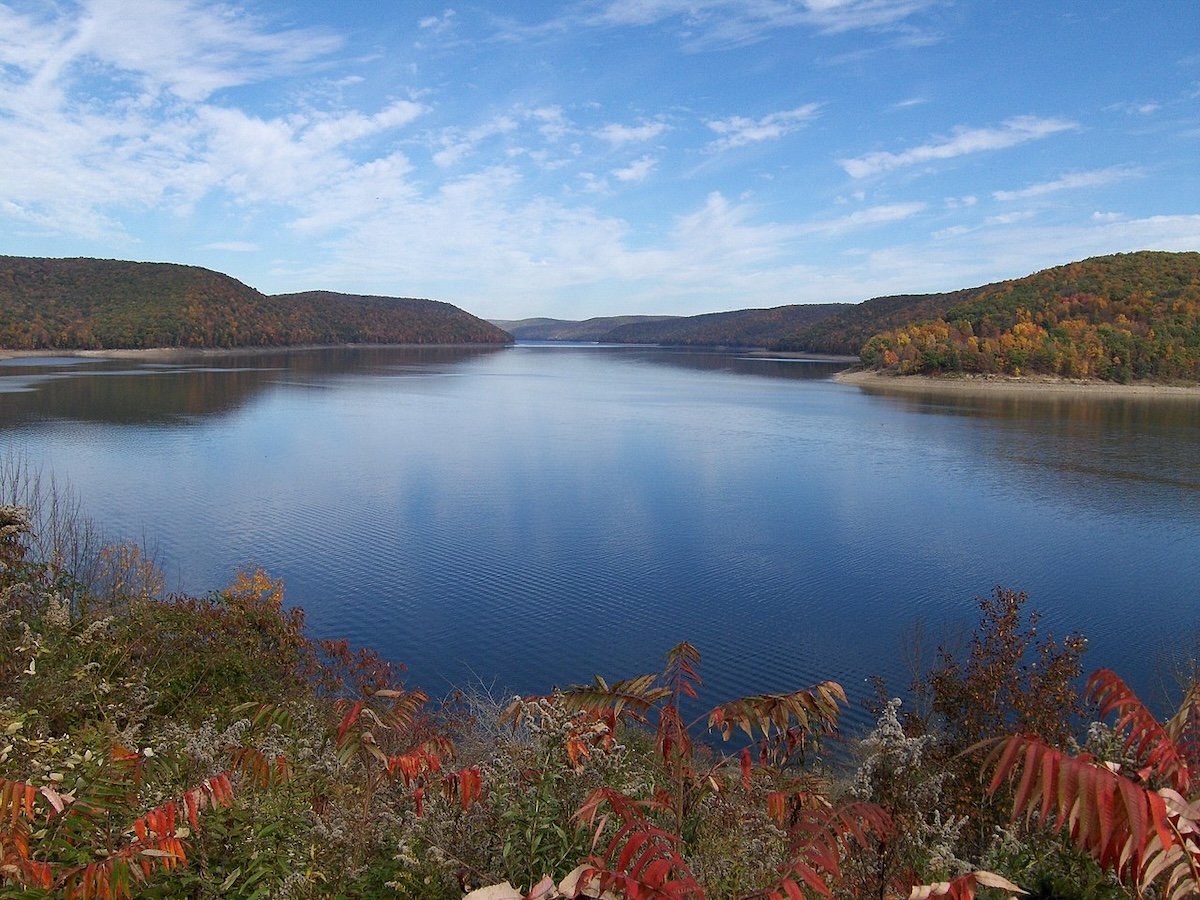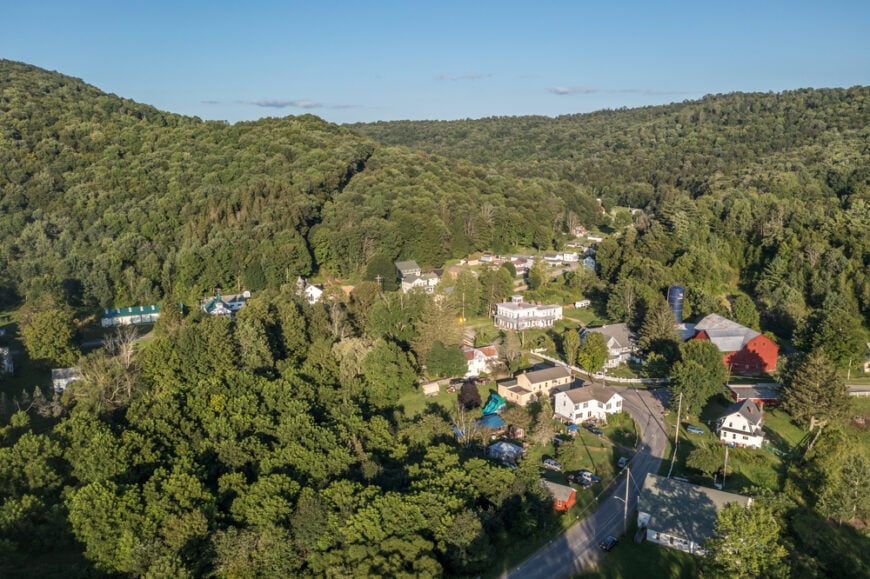
Northeast Pennsylvania is a region rich with natural beauty, charming landscapes, and tucked-away towns that offer a peaceful retreat from the bustle of city life. I’ve always been fascinated by these hidden gems where tranquility reigns supreme and the sense of community is strong.
If you’re longing for a place where the pace is slower and nature is right at your doorstep, allow me to introduce you to twenty five of the most secluded towns in Northeast Pennsylvania. Each one offers its own unique blend of serenity, character, and the simple pleasures of rural living.
25. Dushore: Hidden Mountain Village
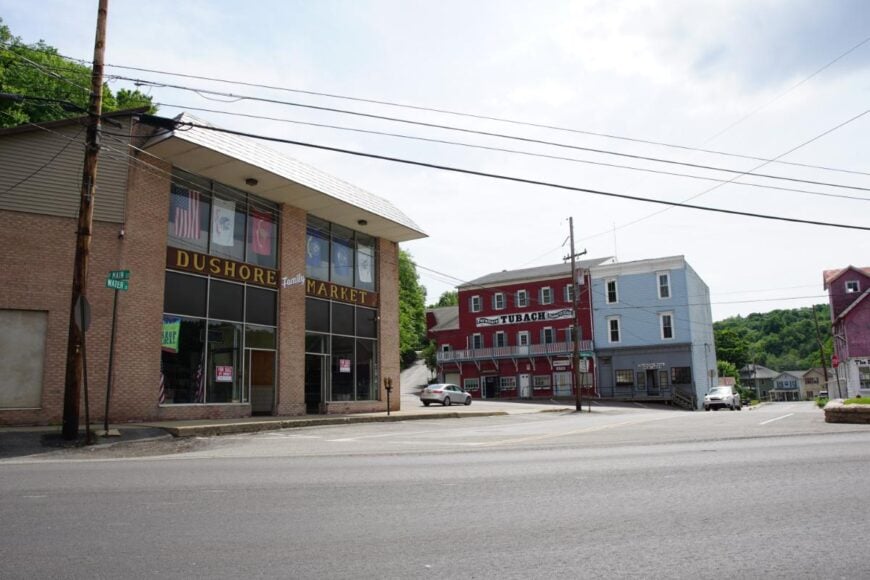
Dushore serves as the economic hub of rural Sullivan County, providing shops, services, and gathering places for the surrounding countryside. In its early years, tanneries, lumber mills, and creameries powered growth, with railroads carrying local goods to larger markets.
Today the economy is smaller but steady, anchored by retail stores, restaurants, and essential services like the bank and post office. Farming and forestry continue to play a role, while tourism tied to Ricketts Glen and Worlds End State Parks adds seasonal income.
Many residents commute outward for work, yet the town remains the center of commerce for the county. It’s the kind of place where a modest economy quietly sustains an entire region.
Where is Dushore?
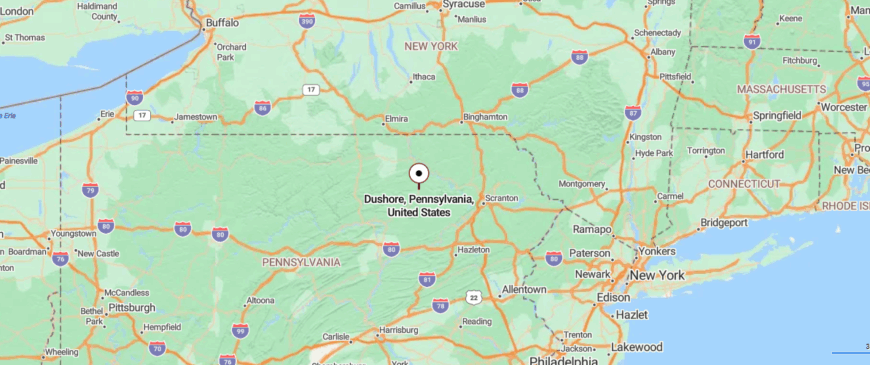
Dushore is a small borough in Sullivan County, north-central Pennsylvania, nestled in the Endless Mountains region. About 75 miles northwest of Scranton, it is reached by U.S. Route 220, a winding road that cuts through forested hills and valleys.
The town is surrounded by rolling ridges, streams, and state forest lands that give it a quiet, mountain setting. With its remote location and wooded backdrop, Dushore feels like a hidden village held close by the hills.
24. Lopez: A Quiet Plateau
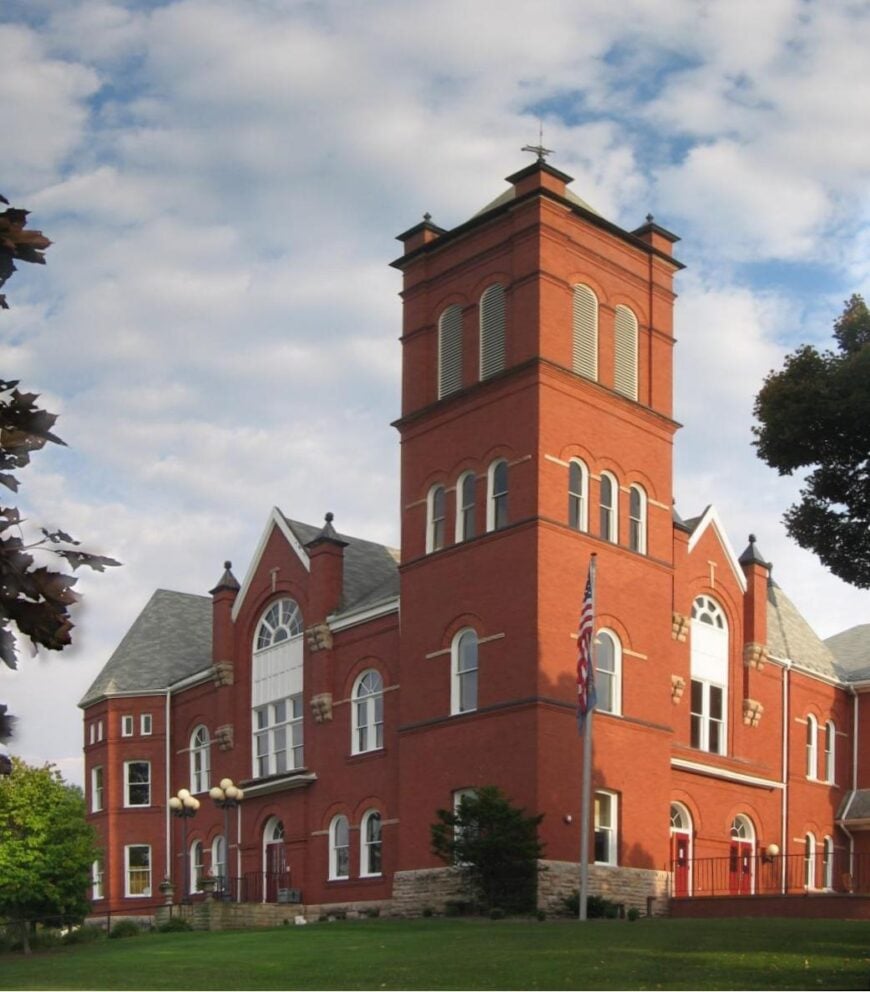
Lopez, in Sullivan County, grew out of the lumber and tanning industries that once dominated the Endless Mountains. In the late 1800s it became a logging and sawmill hub, with the railroad carrying timber and finished goods out of the forests.
When those industries declined, many families turned to farming, small trades, and seasonal work to sustain themselves. The nearby Loyalsock State Forest and Ricketts Glen State Park now bring campers, hikers, and anglers, adding tourism to the local economy.
The community itself is small, with only a few services, but its history of hard labor and resilience remains visible in the remnants of mills and homesteads. Lopez is the kind of place where the economy has always been rooted in the land, adapting as times change but never losing its steady character.
Where is Lopez?

Lopez is a village in Sullivan County, northeastern Pennsylvania, set on a high plateau in the Endless Mountains. About 30 miles west of Wilkes-Barre, it is reached by State Route 487, a winding road that climbs through forested ridges and valleys.
The community is surrounded by state game lands, streams, and quiet woods that keep it feeling apart from nearby towns. With its elevated perch and remote setting, Lopez carries the solitude of a place tucked high in the hills.
23. Laceyville: Riverside Calm
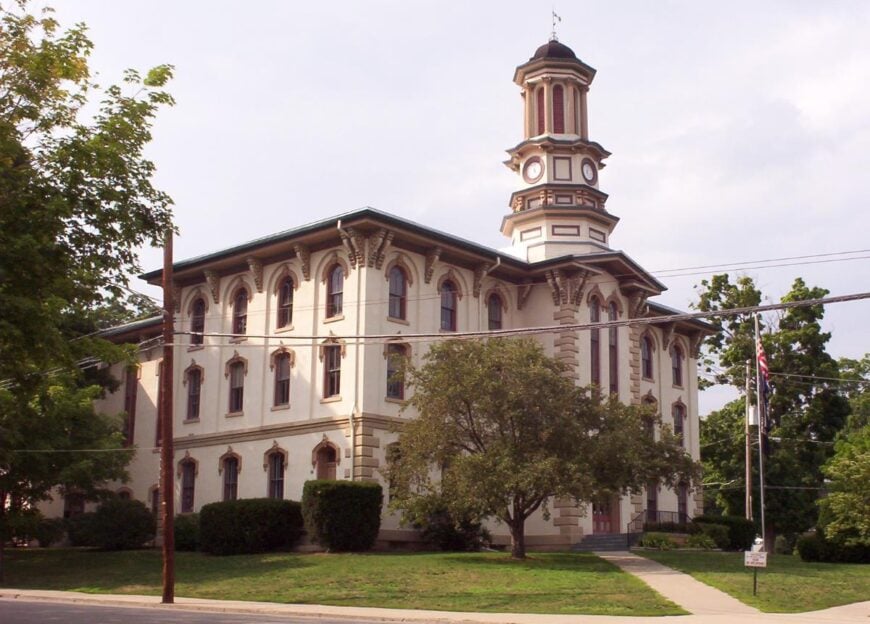
Laceyville, in Wyoming County, developed as a river town along the Susquehanna, where farming and small commerce sustained families for generations. Its downtown once bustled with general stores, grain depots, and businesses tied to the agricultural economy of the valley.
Today, the town’s economy is supported by local retail, small service businesses, and the surrounding farms that continue to produce crops and dairy. Proximity to larger centers like Tunkhannock means many residents commute for work, though Laceyville still provides basic goods and services to nearby rural areas.
Tourism tied to the river and scenic countryside adds seasonal income, especially in the summer months. The economy here is modest, but it remains an important anchor for the surrounding farming community.
Where is Laceyville?
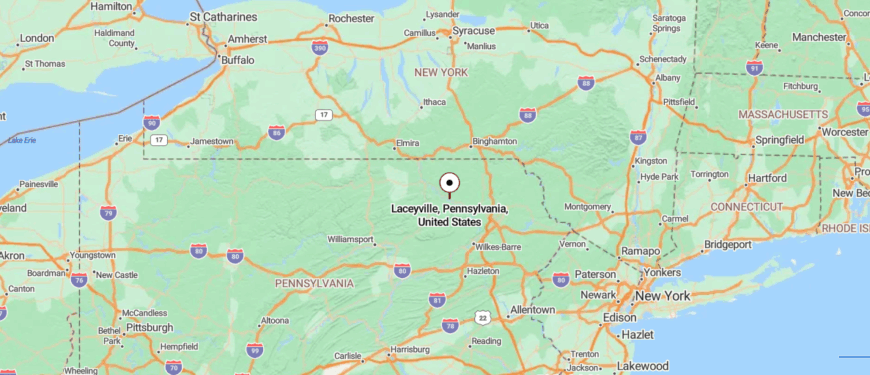
Laceyville is a borough in Wyoming County, northeastern Pennsylvania, perched along the Susquehanna River. About 50 miles northwest of Wilkes-Barre, it is reached by U.S. Route 6, a scenic highway that follows the river’s bends through rolling farmland and wooded ridges.
The town itself is small, with neighborhoods gathered close to the water and surrounded by fields and hills. Its riverside setting and distance from larger cities give Laceyville the quiet feel of a community shaped by the land and river.
22. Forksville: A Covered Bridge Haven
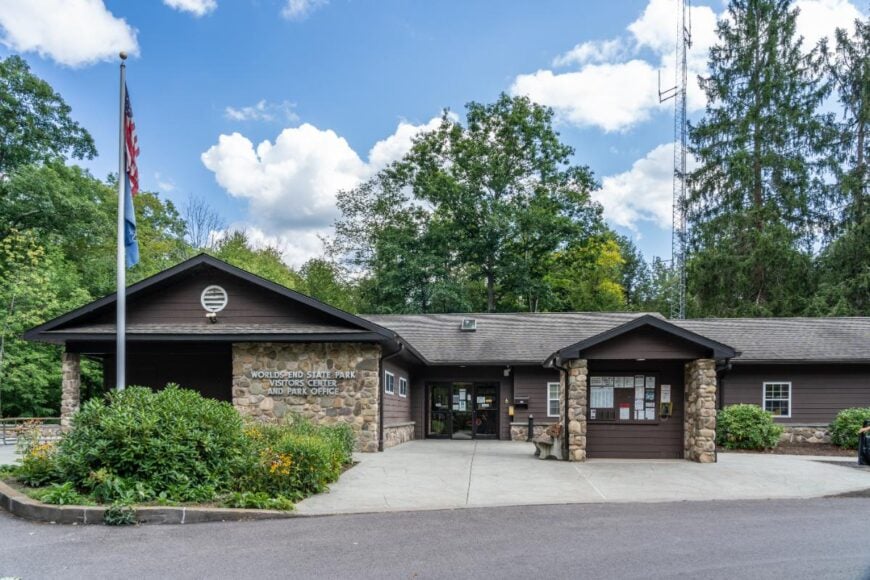
Forksville, in Sullivan County, grew along the Loyalsock Creek as a milling and lumber town in the 1800s. The sawmills and tanneries once drove the local economy, with the covered bridge serving as a key crossing for trade and travel.
When those industries declined, small farming and service jobs helped sustain the community. Today, Forksville is best known for the Forksville General Store and the nearby Worlds End State Park, which draw visitors for food, festivals, and outdoor recreation.
Tourism has become the main economic driver, with camping, hiking, and fishing supporting local businesses during peak seasons. Though small, the town’s economy balances its historic roots with the steady flow of visitors tied to the natural landscape.
Where is Forksville?
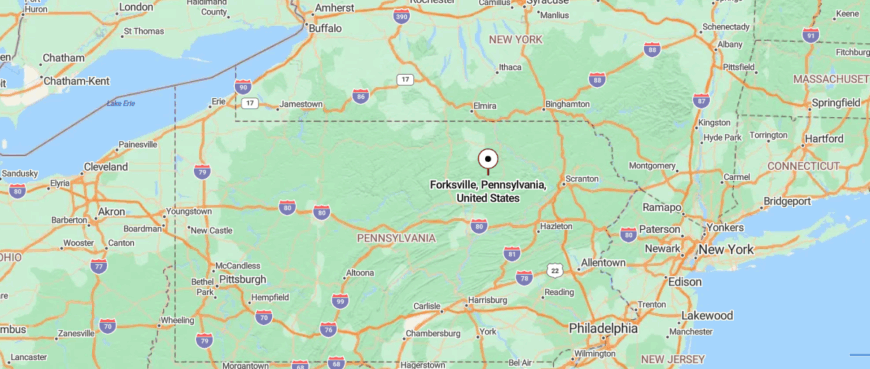
Forksville is a small borough in Sullivan County, north-central Pennsylvania, tucked into the Endless Mountains at the confluence of Little Loyalsock Creek and Loyalsock Creek. About 60 miles northwest of Scranton, it is reached by State Route 87, a winding road that follows the curves of the water through forested valleys.
The town is known for its historic covered bridge and its proximity to Worlds End State Park, where steep cliffs and trails frame the landscape. Surrounded by creeks and mountains, Forksville feels like a hidden corner where the past and wilderness meet.
21. Wyalusing: Rolling Hills Hideaway
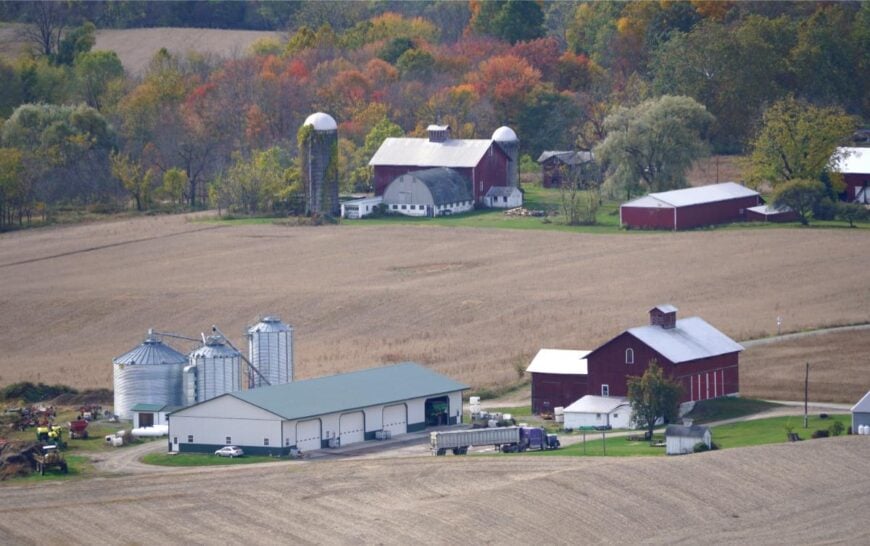
Wyalusing, in Bradford County, has long served as a commercial center for the surrounding farming communities of the Endless Mountains. Its early economy was tied to lumbering, milling, and small trade along the Susquehanna River.
Today, agriculture remains vital, with dairy farms and crop production supporting the local economy. The borough also benefits from manufacturing and services, and in recent decades the natural gas industry has brought jobs and revenue to the region.
Downtown businesses, banks, and schools make Wyalusing a hub for nearby rural townships. The economy here blends traditional farming with newer industries, giving the small town an outsized role in its county.
Where is Wyalusing?
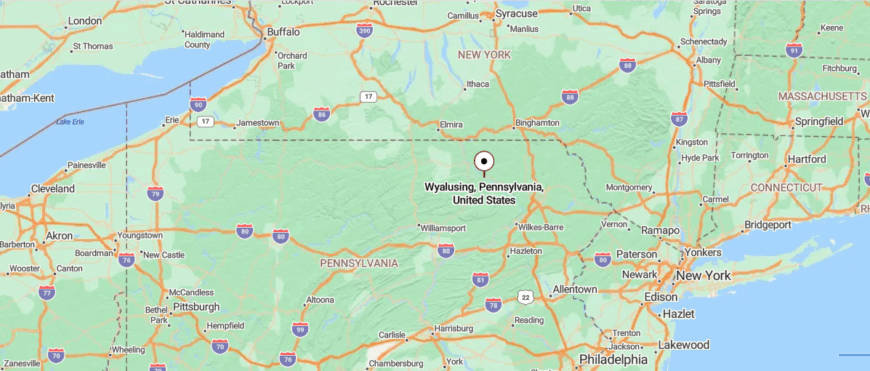
Wyalusing is a borough in Bradford County, northeastern Pennsylvania, resting along the banks of the Susquehanna River. About 25 miles southeast of Towanda, it is reached by U.S. Route 6, which winds through farmland and wooded ridges beside the river.
The community is framed by rolling hills, quiet valleys, and historic buildings that reflect its long past. With its riverside setting and small-town scale, Wyalusing carries the calm of a place set gently apart from busier towns.
20. Nicholson: Historic Trestle Town
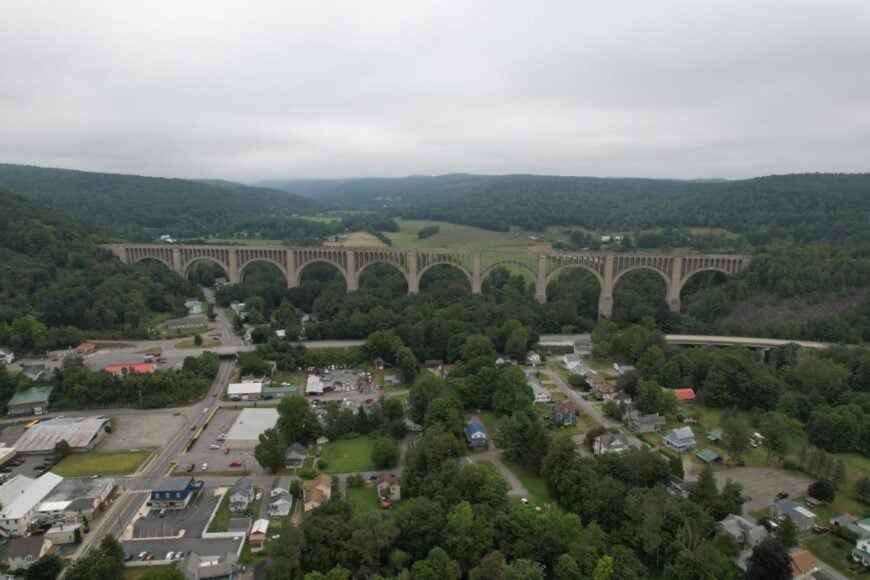
Nicholson, in Wyoming County, grew up around the mighty Tunkhannock Creek Viaduct, the towering concrete railroad bridge that once carried coal and freight across the valley. In its early days, rail work and small-scale farming fueled the town, while shops and mills served the families who settled along the creek.
As the coal era faded, many residents turned to commuting, small trades, and local businesses to keep the community going. The annual Bridge Day festival now gives the local economy a seasonal lift, bringing visitors to admire the famous viaduct and browse vendor stalls.
Outdoor lovers can fish the creek, hike nearby trails, or simply take in the sweeping views of the Endless Mountains. Nicholson is the kind of place where history and livelihood are intertwined, its fortunes rising and falling with the steel span above.
Where is Nicholson?
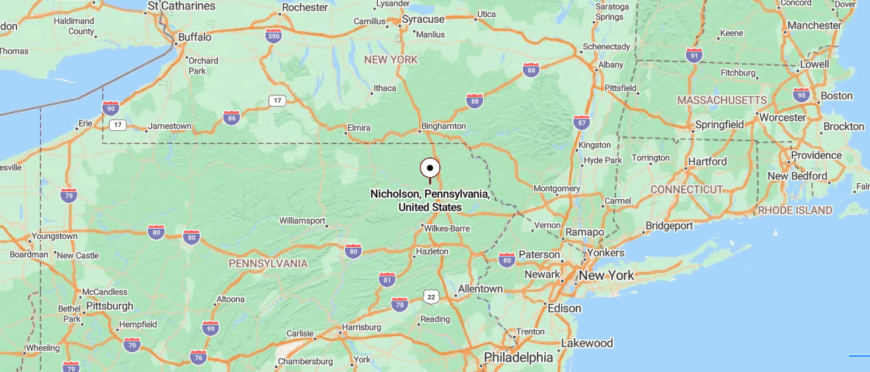
Nicholson is a borough in Wyoming County, northeastern Pennsylvania, set in a valley along the Tunkhannock Creek. About 25 miles northwest of Scranton, it is reached by U.S. Route 11, a road that follows the creek’s bends through farmland and wooded hills.
The town is best known for the Nicholson Bridge, a massive concrete railroad viaduct that towers above the community. With its historic landmark and quiet valley setting, Nicholson feels like a small town cradled between hills and history.
19. Monroeton: Creekside Refuge
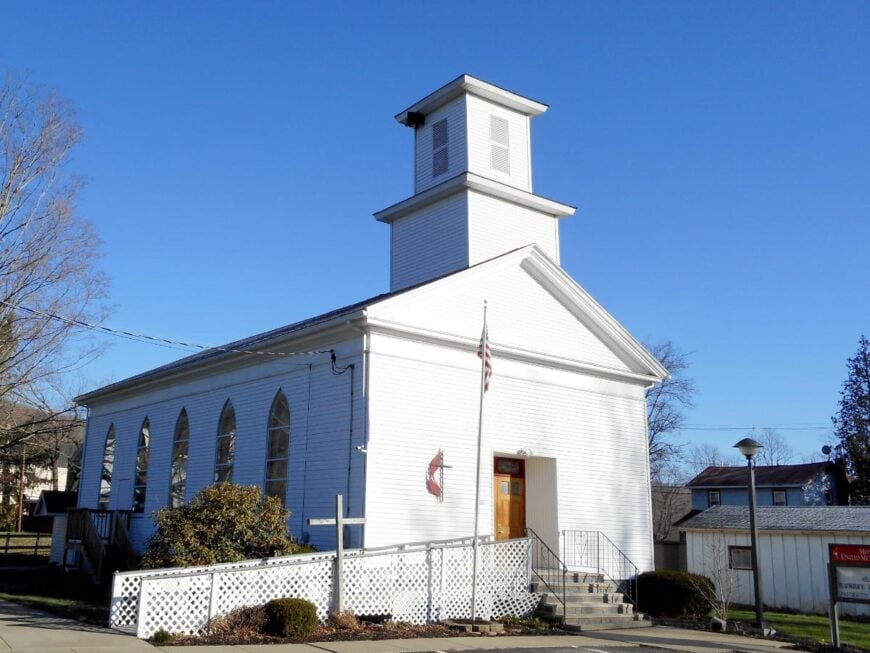
Monroeton, in Bradford County, began as a milling town, with sawmills and gristmills using the waters of Towanda Creek to drive its early economy. Farming soon followed, and for generations the surrounding hills have supported dairy, hay, and grain production.
The town itself is small, but local shops, garages, and service businesses provide daily needs for nearby rural families. Many residents commute to Towanda or Sayre for work, linking Monroeton’s economy to larger employment centers.
Outdoor recreation also plays a role, with hunters, anglers, and travelers passing through on their way to the Endless Mountains. The economy here remains modest but steady, shaped by farming roots and supported by its role as a local service stop.
Where is Monroeton?
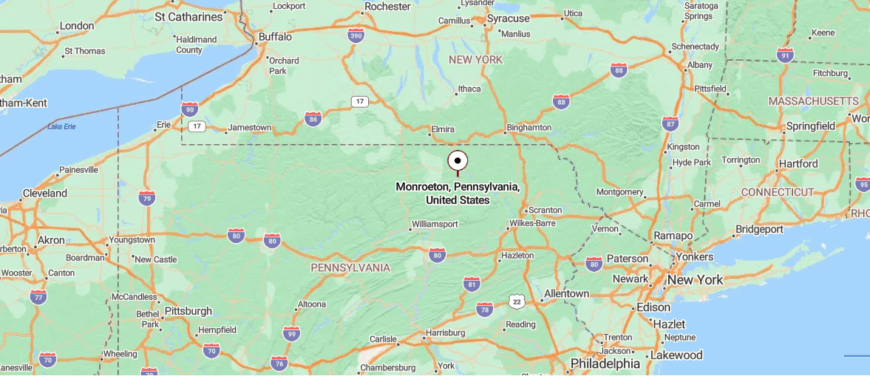
Monroeton is a small borough in Bradford County, northeastern Pennsylvania, resting where Towanda Creek winds through the Endless Mountains. About 5 miles south of Towanda, it is reached by U.S. Route 220, a two-lane highway that runs alongside creeks and wooded ridges.
The community is surrounded by hills, farmland, and forest that give it a quiet, rural feel. Tucked into its valley, Monroeton feels like a place where the landscape holds the town close.
18. Noxen: Mountain Gateway
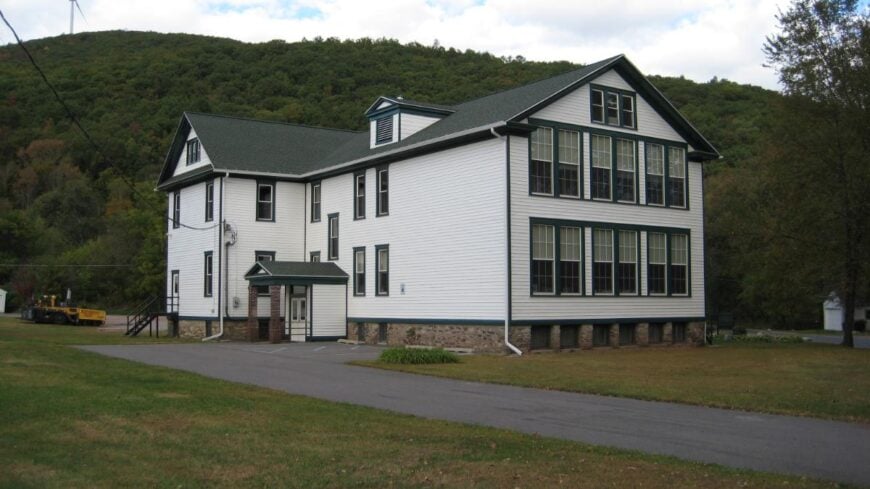
Noxen, in Wyoming County, was built on the timber and tanning industries that once thrived along Bowman’s Creek. The forests provided lumber and bark for tanneries, while the railroad carried goods to larger markets.
When those industries faded, farming and small trades kept the town alive, with families relying on the land and nearby jobs. Today, many residents commute to Tunkhannock, Dallas, or Wilkes-Barre, though local shops, garages, and diners still serve the community.
Outdoor recreation around Bowman’s Creek, including trout fishing and seasonal hunting, adds a modest boost to the economy. Noxen’s economy reflects resilience, shifting from resource industries to a balance of commuting, small business, and rural tradition.
Where is Noxen?
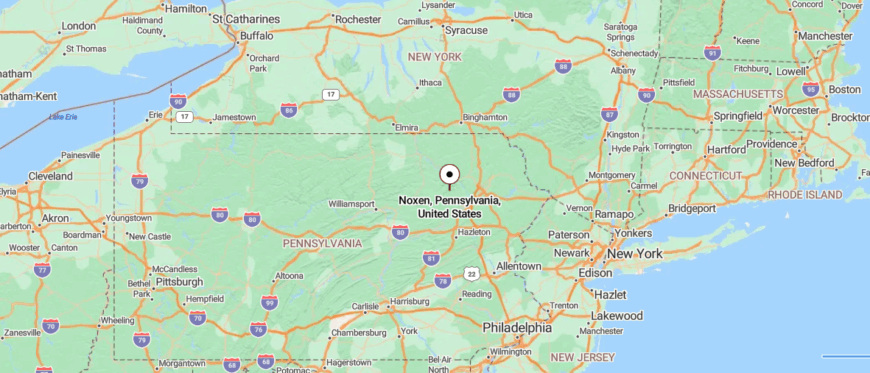
Noxen is a village in Wyoming County, northeastern Pennsylvania, nestled in the shadow of the Endless Mountains. About 30 miles northwest of Wilkes-Barre, it is reached by State Route 29, a winding road that passes through farmland and forested valleys.
The community is bordered by Bowman Creek and surrounded by state game lands, giving it a backdrop of streams and rugged hills. With its mountain setting and quiet roads, Noxen feels like a town held deep in the fold of nature.
17. Lawton: Pastoral Stillness
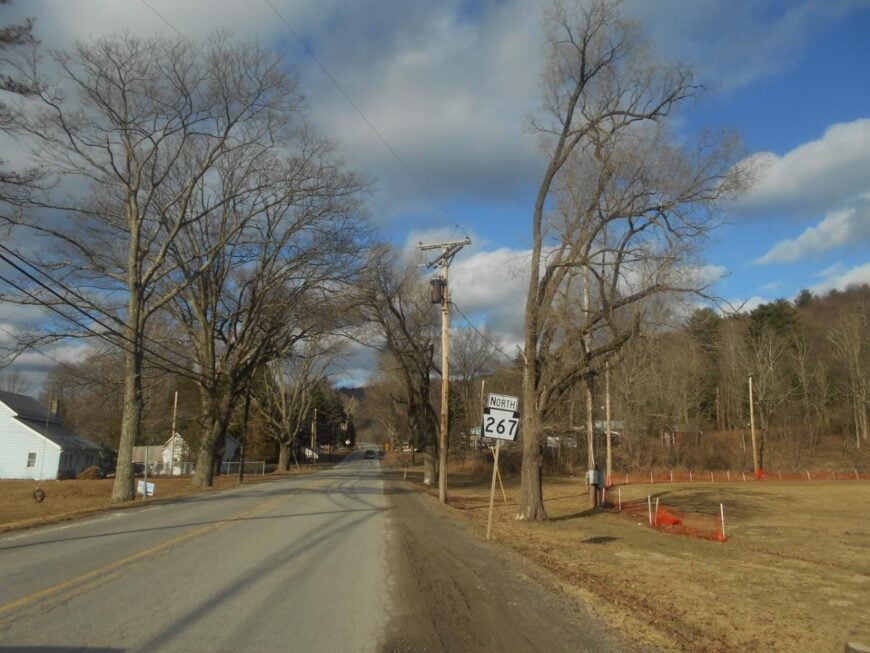
Lawton, in Susquehanna County, developed as a small service center for surrounding farms in the Endless Mountains. Its early economy was tied to agriculture, with dairy, hay, and grain production supporting local families and small stores.
The town hosted essential businesses like a post office, general store, and repair shops that sustained rural life. Today, farming remains central, but many residents commute to Montrose or Towanda for work, linking the community to larger employment hubs.
Tourism adds a seasonal lift, with hunters, anglers, and travelers passing through the wooded hills and nearby lakes. Lawton’s economy remains modest, grounded in farming roots and supported by a handful of local services.
Where is Lawton?
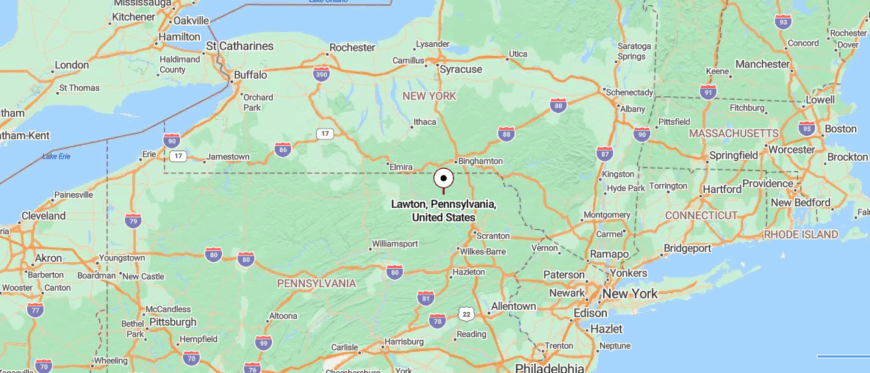
Lawton is a rural village in Susquehanna County, northeastern Pennsylvania, surrounded by farmland and wooded hills. About 12 miles northwest of Montrose, it is reached by State Route 267, a country road that winds through valleys and small creeks.
The area is quiet and lightly settled, with open fields blending into forested ridgelines. With its secluded setting and simple landscape, Lawton feels like a place where the countryside sets the pace of life.
16. Meshoppen: Riverbend Quiet
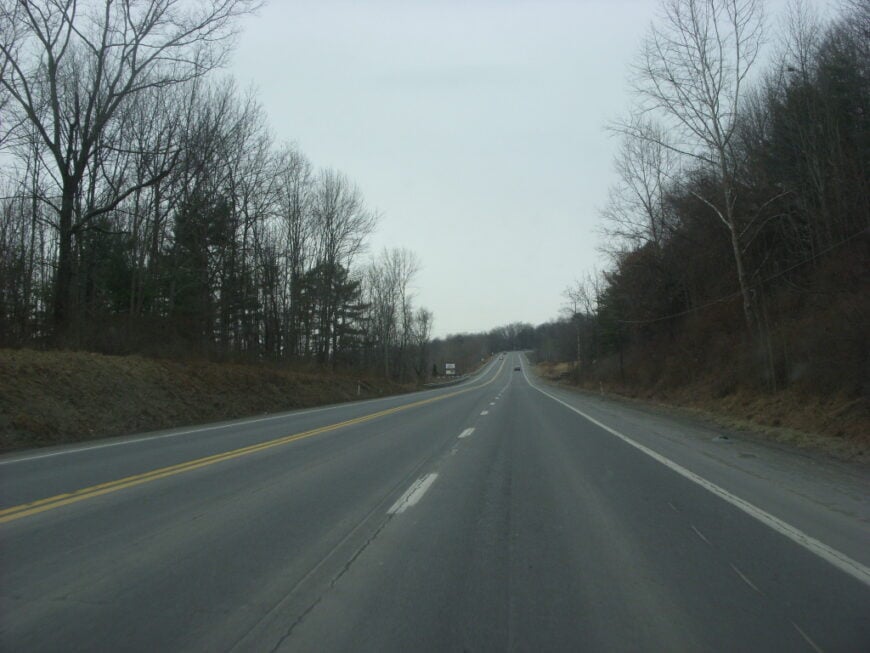
Meshoppen, in Wyoming County, grew as a Susquehanna River town where milling, lumber, and farming first anchored the economy. The river and later the railroad made it a hub for moving grain, timber, and goods to larger markets.
For much of the 20th century, agriculture and small manufacturing supported families, while local shops and services lined Main Street. In recent decades, the natural gas industry in the Marcellus Shale has added jobs and revenue, reshaping the local economy.
Many residents also commute to nearby Tunkhannock or Scranton, balancing outside work with the town’s small businesses. Meshoppen’s economy today is a mix of historic farming roots, modern energy development, and its role as a service stop along the river.
Where is Meshoppen?
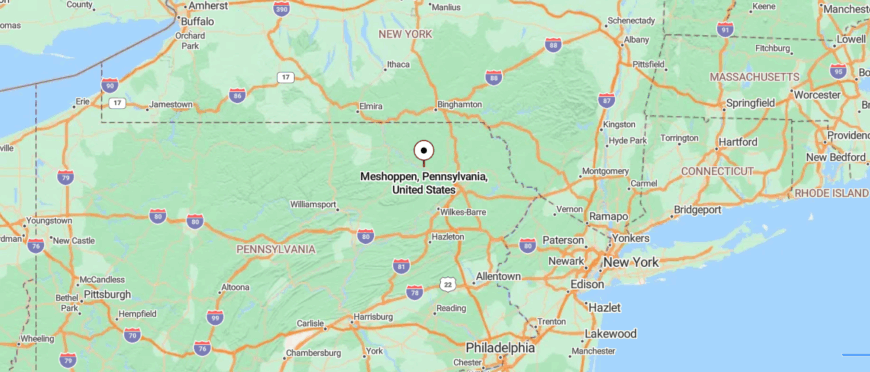
Meshoppen is a borough in Wyoming County, northeastern Pennsylvania, set along the Susquehanna River in a valley of the Endless Mountains. About 40 miles northwest of Wilkes-Barre, it is reached by U.S. Route 6, which follows the river’s bends through rolling farmland and forested slopes.
The town’s layout is close to the water, with neighborhoods and streets nestled between the river and surrounding ridges. With its riverside setting and mountain backdrop, Meshoppen carries the quiet feel of a community tucked between land and stream.
15. Ulster: Riverside Hamlet
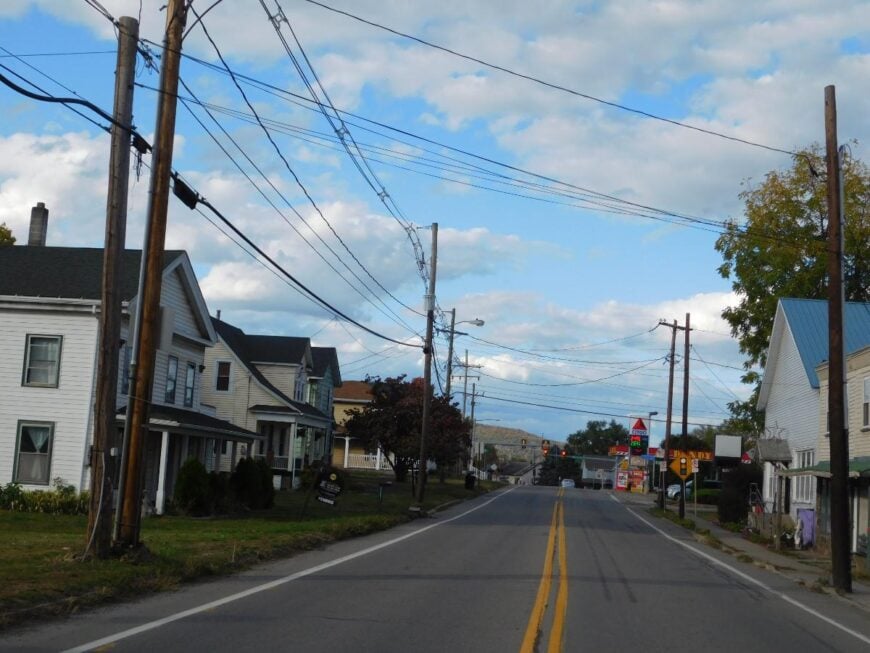
Ulster, in Bradford County, grew as a river settlement along the Susquehanna, where fertile floodplains supported farming and small trade. Early residents raised crops and livestock, supplying nearby markets and relying on the river for transport.
Local businesses and services developed around the farming economy, giving the community a role as a stop for surrounding rural families. In more recent decades, the natural gas industry has joined agriculture as a source of jobs and income.
Outdoor opportunities along the river, from fishing to kayaking, bring occasional visitors and small boosts to local commerce. Ulster’s economy remains rooted in the land, balancing tradition with the changes brought by new industries.
Where is Ulster?
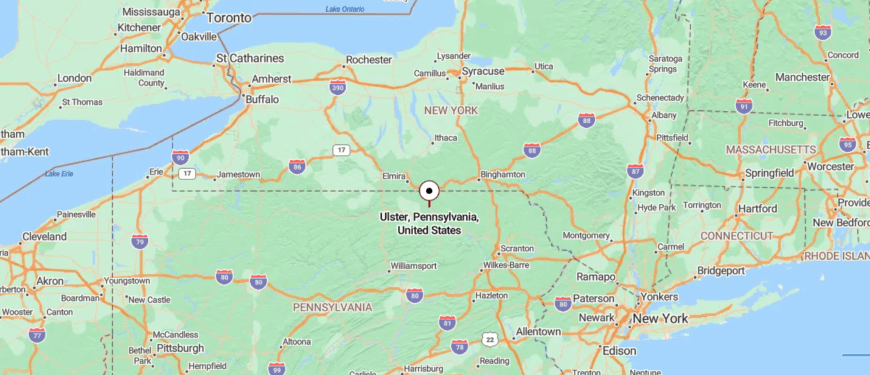
Ulster is a small community in Bradford County, northeastern Pennsylvania, located along the Susquehanna River. It sits about 8 miles north of Towanda, reached by following U.S. Route 220 as it traces the river through farm fields and wooded hills.
The village is surrounded by open countryside, river flats, and rolling ridges that frame the landscape. With its riverside location and distance from larger towns, Ulster holds the quiet character of a place set gently apart.
14. Great Bend: Borderland Retreat
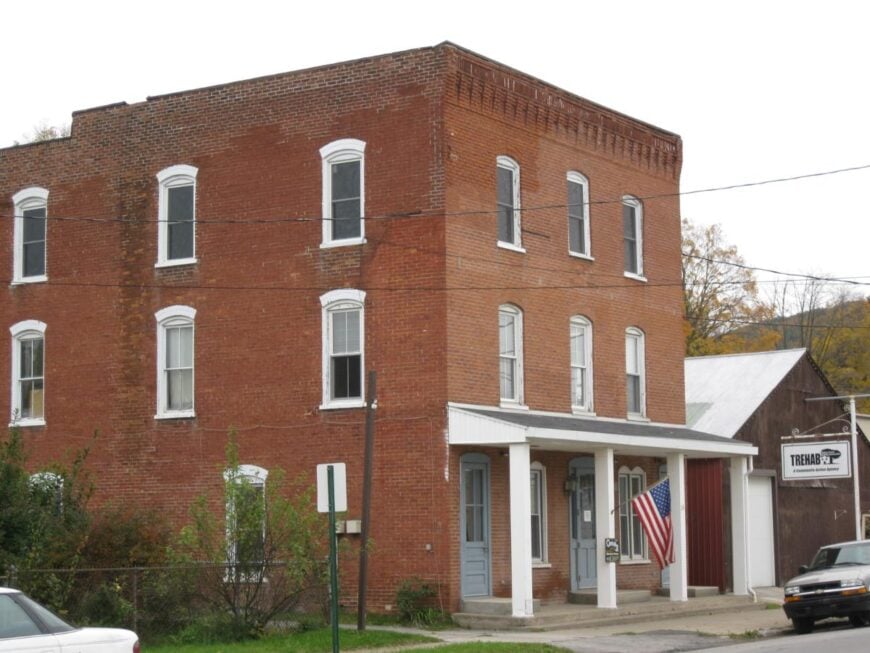
Great Bend, in Susquehanna County, developed as a river and railroad town, its location along the Susquehanna making it an early hub for trade and transport. Farming and small industry supported families for generations, while Main Street businesses provided goods and services to the region.
The arrival of Interstate 81 reshaped the local economy, bringing truck traffic, travelers, and new commercial opportunities tied to the highway. Many residents now commute to Binghamton, New York, or Montrose for work, linking the town’s economy to larger employment centers.
Small shops, diners, and gas stations continue to serve both locals and passersby, keeping Great Bend active despite its modest size. The economy here reflects adaptation, shifting from river and rail to highways and regional commuting.
Where is Great Bend?
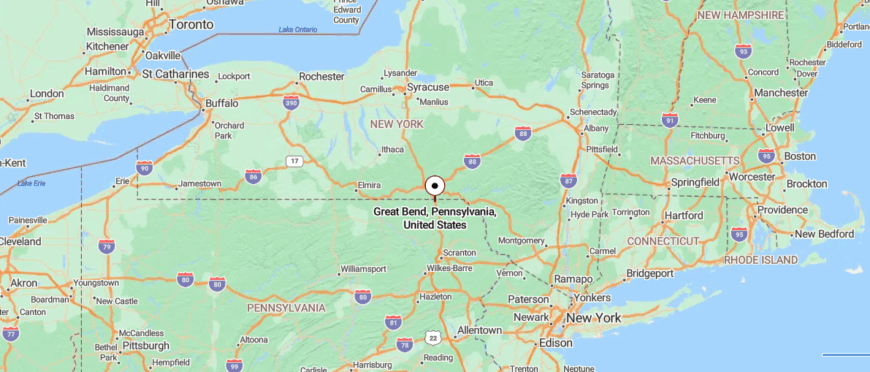
Great Bend is a borough in Susquehanna County, northeastern Pennsylvania, resting at a bend of the Susquehanna River near the New York state line. About 10 miles north of Montrose, it is reached by Interstate 81, which runs directly through the valley alongside the river.
The community is framed by low ridges, farmland, and the steady flow of the Susquehanna that defines its setting. With its border location and riverside views, Great Bend feels like a quiet gateway between Pennsylvania and New York.
13. Montrose: Hilltop Retreat
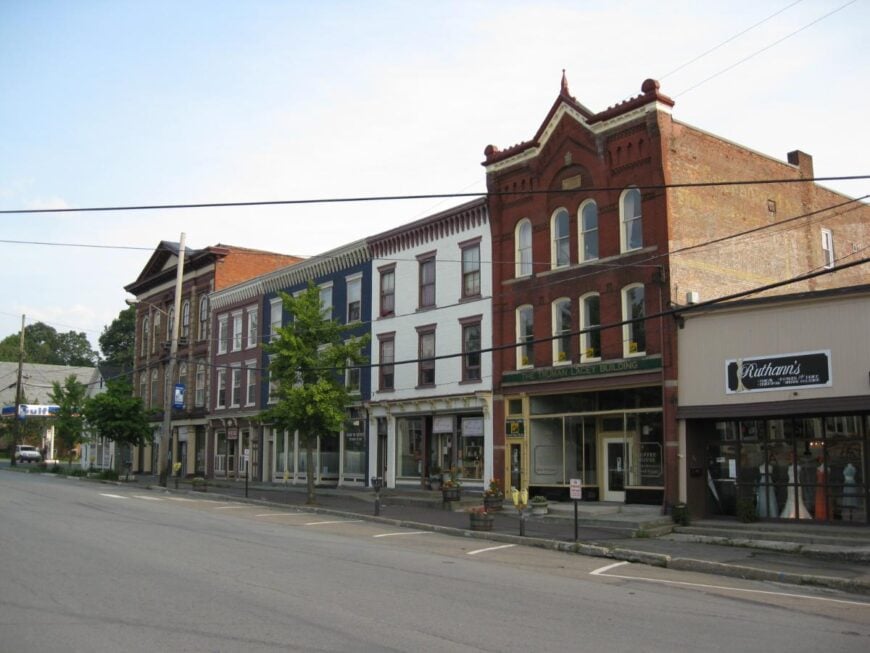
Montrose, the county seat of Susquehanna County, has long served as the region’s commercial and civic hub. In its early years, dairying and small industries like tanneries and creameries supported the town’s growth.
Today, government offices, schools, and healthcare centers provide much of the employment for residents. The courthouse square anchors a downtown of shops, cafés, and small businesses that keep the local economy active.
Tourism also plays a part, with visitors drawn to the Endless Mountains, historic homes, and seasonal festivals. Montrose’s economy blends public service, agriculture, and local enterprise, sustaining a community that feels both traditional and enduring.
Where is Montrose?
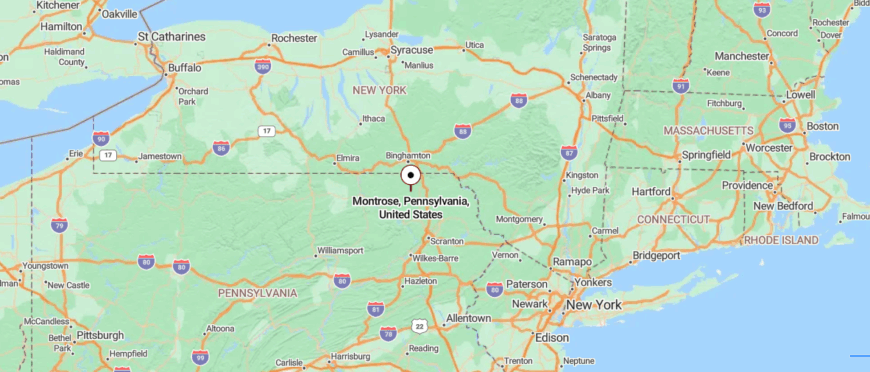
Montrose is a small borough in Susquehanna County, northeastern Pennsylvania, and serves as the county seat. It sits about 30 miles northwest of Scranton in the scenic Endless Mountains.
The town is located near the headwaters of the Susquehanna River, surrounded by rolling hills and forested ridges. Its elevated setting gives Montrose a quiet, small-town atmosphere with wide, open views of the countryside.
12. Shunk: Forest Enclave
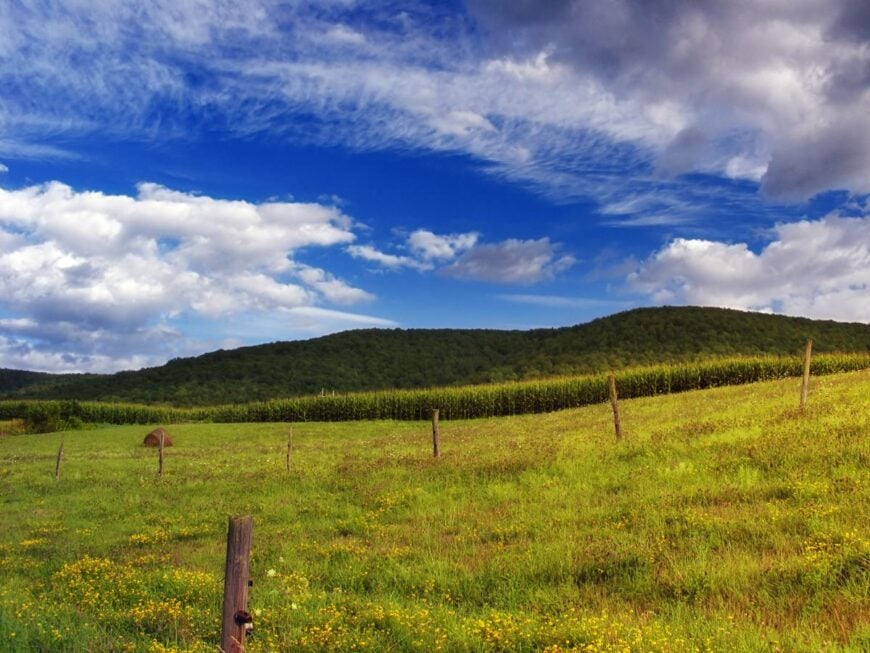
Shunk, in Sullivan County, developed as a lumbering town in the 1800s, when sawmills and tanneries fueled the local economy. The forests provided steady work, with logs floated down creeks and hauled by rail to larger markets.
As the timber boom faded, small farming and seasonal work became the foundation for families who stayed. Today, the area relies on forestry, hunting camps, and tourism tied to nearby state forests and parks.
Local businesses are few, but they serve as essential stops for residents and visitors moving through the Endless Mountains. Shunk’s economy remains modest, rooted in the land and supported by outdoor recreation.
Where is Shunk?

Shunk is a small unincorporated community in Sullivan County, Pennsylvania, tucked into the rugged hills of the Endless Mountains. It sits along Pennsylvania Route 154, about 15 miles southwest of Dushore and near the Loyalsock State Forest.
The area is heavily wooded, with creeks, hollows, and scenic overlooks that reflect its remote Appalachian setting. Quiet and rural, Shunk offers a sense of seclusion and close ties to the surrounding forests and ridges.
11. Little Meadows: Borderline Seclusion

Little Meadows, set in the northwest corner of Susquehanna County, has always leaned on its farmland and forests for a living. In its early days, dairy herds, small mills, and family homesteads shaped the community’s modest economy.
As industries shifted, many residents found work in nearby towns or crossed into New York for jobs, though small farms and local trades still hold steady here. The village center remains a gathering point, with a handful of businesses and community events that support both locals and travelers.
Hunting, fishing, and the quiet countryside add a touch of tourism, though it’s the agricultural backbone that continues to sustain the area. Little Meadows is the kind of place where the economy is woven into daily routines, simple and enduring.
Where is Little Meadows?
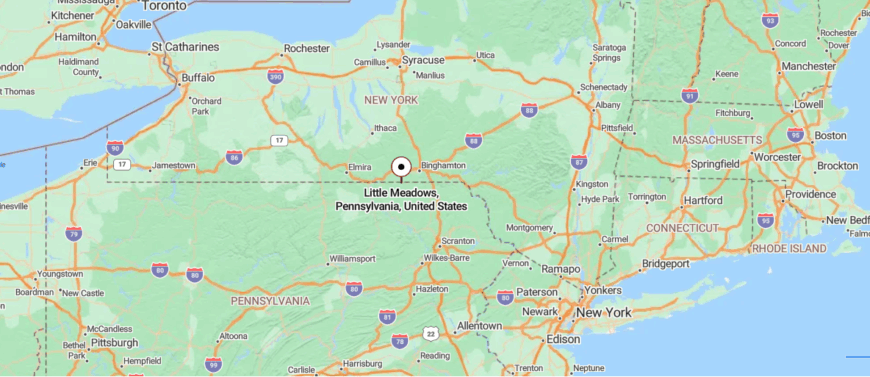
Little Meadows is a small borough in Susquehanna County, northeastern Pennsylvania, close to the New York state line. It sits in a rural, hilly part of the Endless Mountains region, surrounded by forests, farms, and country roads.
The community is located about 10 miles southeast of Binghamton, New York, making it a quiet town with close access to a larger urban center. With its mix of rolling countryside and wooded hills, Little Meadows has the feel of a tucked-away village on the Pennsylvania–New York border.
10. Hillsgrove: Wilderness Retreat
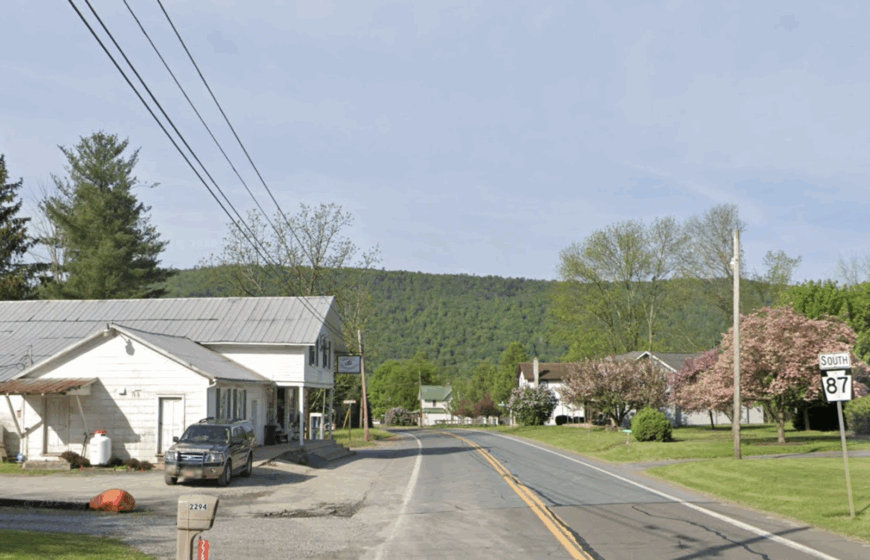
With a population hovering around just 200 residents, Hillsgrove is truly a hidden jewel nestled within the expansive Loyalsock State Forest. I love how this tiny town is enveloped by vast stretches of greenery, offering endless opportunities for hiking, fishing, and camping.
The main industries here revolve around forestry and small-scale farming, which add to the rustic charm of the place. What makes Hillsgrove so secluded is its minimal development; there are vast areas of undeveloped land, making it perfect for those seeking solitude amidst unspoiled nature.
The lack of commercial establishments means the nights are as quiet as they come, interrupted only by the sounds of wildlife. For anyone craving an escape into the wilderness without sacrificing a sense of home, Hillsgrove stands out as an idyllic spot.
Where is Hillsgrove?
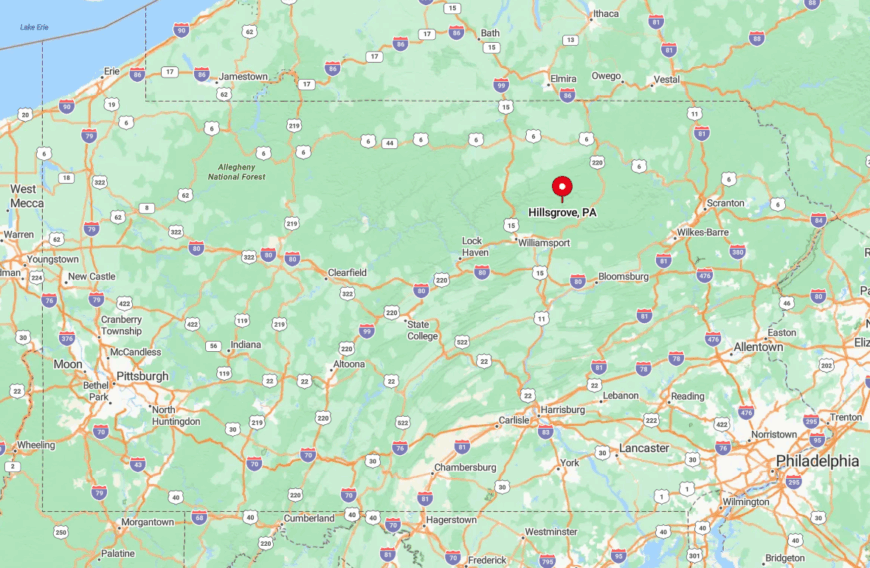
Hillsgrove is tucked away in Sullivan County, in the northeastern part of Pennsylvania. Its seclusion is amplified by the surrounding state forest lands, which act as a natural barrier from the hustle and bustle of larger towns.
Getting there involves a scenic drive along PA Route 87, a journey that in itself feels like a step back into a simpler time. Because of its remote location, Hillsgrove remains one of those places where you can genuinely disconnect and immerse yourself in the beauty of nature.
9. Mehoopany Township: Remote River Valley

Mehoopany, with a modest population of around 900, is a tranquil community nestled along the Susquehanna River. I’ve always been drawn to its peaceful environment, where expansive properties offer residents plenty of space and privacy.
Outdoor enthusiasts can enjoy fishing, kayaking, and hiking, all set against the backdrop of northeastern Pennsylvania’s rolling hills. The town’s economy primarily revolves around agriculture and some light industry, including a paper products plant nearby.
What sets Mehoopany apart is its minimal development and the vast natural beauty that surrounds it, making it an ideal haven for those seeking a quiet lifestyle away from crowded urban centers. The serene river views and the abundant wildlife contribute to its secluded charm, creating a perfect retreat for nature lovers.
Where is Mehoopany Township?
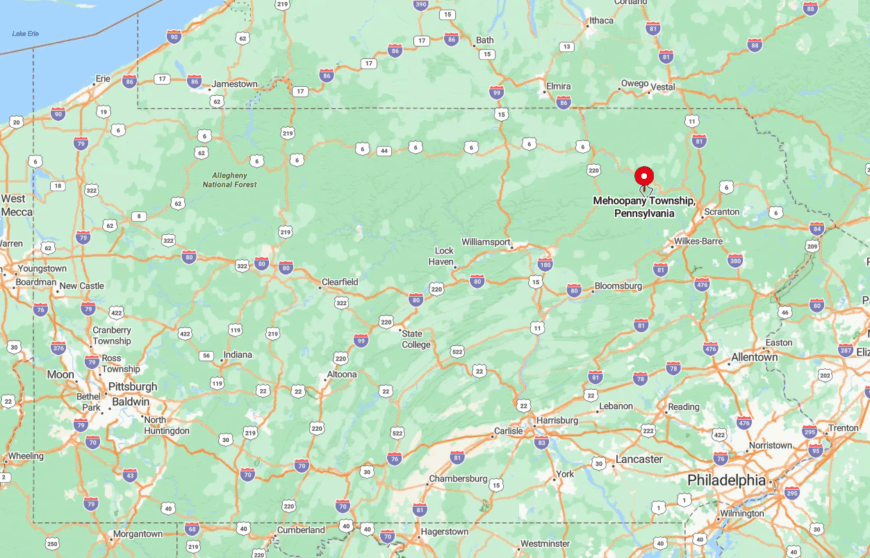
Located in Wyoming County, Mehoopany sits quietly along the banks of the Susquehanna River. Its seclusion is heightened by the surrounding forests and farmlands, which keep it tucked away from major highways and cities.
To get there, you can take PA Route 87 from nearby towns, but the journey ensures that only those seeking Mehoopany’s peace and quiet make the trip. This remoteness is part of its allure, offering an escape that’s both accessible and deeply connected to nature.
8. Rome: Countryside Solace
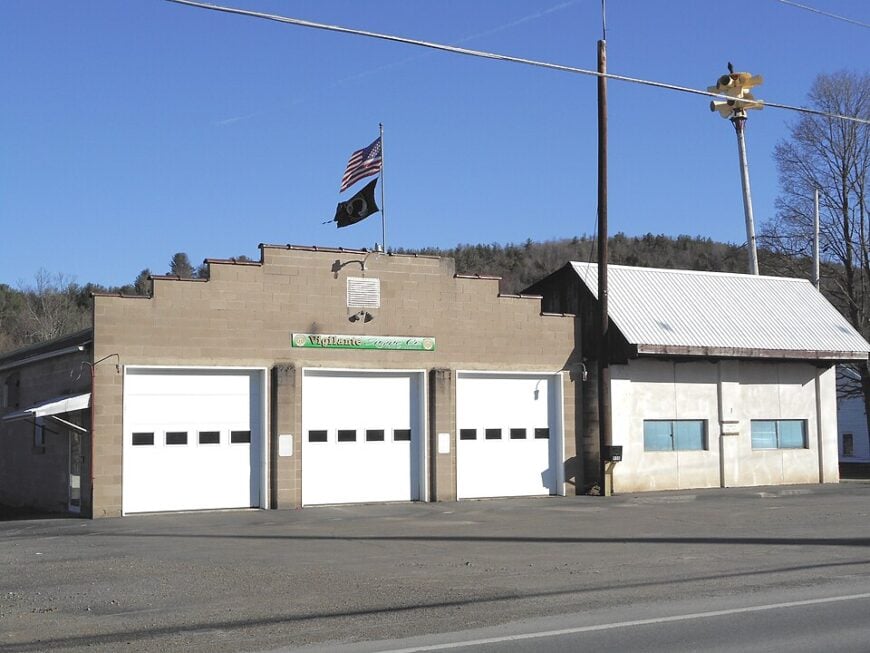
Rome is a small borough with a population of approximately 400 people, embodying the quintessential charm of Pennsylvania’s countryside. I appreciate the town’s vast open spaces, where large acres of farmland stretch as far as the eye can see.
The community thrives on agriculture, with many residents involved in farming and related industries. The tranquility here is unparalleled, thanks to its distance from commercial zones and the absence of heavy traffic.
What makes Rome particularly secluded is not just its size but also the sense of time standing still, providing a peaceful environment perfect for those wanting to immerse themselves in rural life. Hidden gems like local markets and historic buildings add character without disrupting the serene atmosphere.
Where is Rome?

Set in Bradford County, Rome is nestled in the northeastern corner of Pennsylvania. Its seclusion is enhanced by its location, miles away from any major city or highway.
Getting there typically involves a scenic drive along US Route 6, followed by smaller county roads that wind through picturesque landscapes. This journey contributes to the feeling of escape, making Rome a perfect destination for those looking to leave the hustle and bustle behind.
7. Friendsville: A Quiet Hamlet
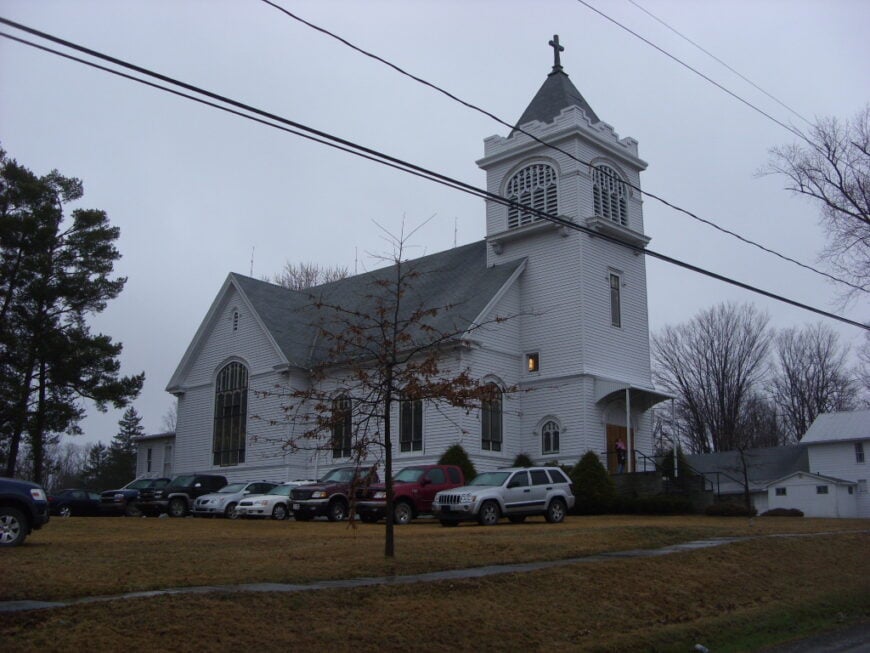
Friendsville is a quaint settlement with a tight-knit community of about 100 residents. I find the vast open spaces and rolling hills surrounding the town to be incredibly peaceful.
Agriculture is the mainstay here, and the pastoral setting is ideal for anyone looking to embrace country living. The town’s charm lies in its simplicity and the camaraderie among neighbors, which is often hard to find in more populated areas.
Friendsville’s seclusion comes from its remote location and the absence of urban development, making it a perfect spot for those seeking tranquility. Unique local spots like small family-owned farms and historic sites add to its appeal without drawing in crowds.
Where is Friendsville?
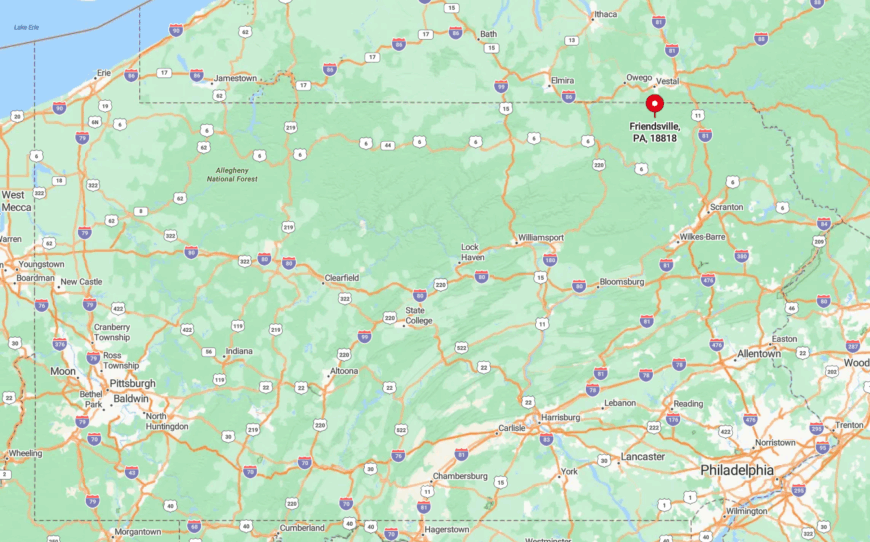
Situated in Susquehanna County, Friendsville is tucked away near the Pennsylvania-New York border. Its secluded nature is partly due to the surrounding woodlands and farmlands that insulate it from nearby towns.
To reach Friendsville, you’ll likely travel along rural roads like PA Route 858, which adds to the sense of discovery. The journey is rewarded with the peaceful ambiance of a true countryside hamlet, far removed from the stresses of city life.
6. Hop Bottom: Valley of Tranquility
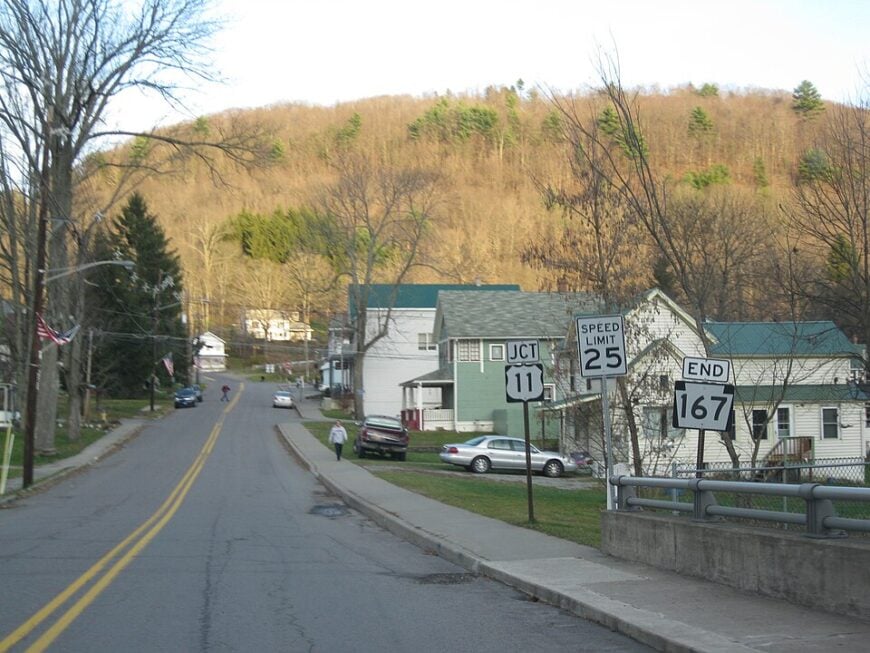
Hop Bottom, home to around 300 people, is nestled in a serene valley that epitomizes peaceful living. What draws me to this small borough is its picturesque landscapes, including the nearby creek that adds to its charm.
The area is known for its low population density, giving residents ample space and privacy. While it was once a hub for hop production (hence the name), today it offers a quiet lifestyle with minimal industrial activity.
The seclusion of Hop Bottom is accentuated by the surrounding hills and the absence of major commercial development. It’s an ideal spot for those who appreciate nature’s beauty and the simple pleasures of a tight-knit community.
Where is Hop Bottom?
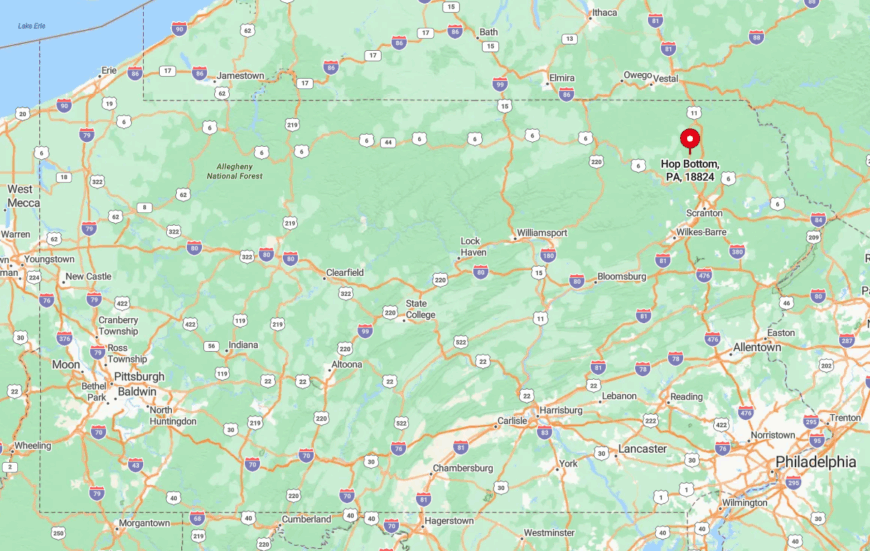
Located in Susquehanna County, Hop Bottom is accessible via PA Route 167, yet remains comfortably off the beaten path. Its secluded nature is enhanced by the enveloping farmlands and forests that separate it from busier areas.
The town’s location in a valley means it’s sheltered from the noise and activity of larger towns. Getting there involves a scenic drive through rolling hills, reinforcing the feeling of stepping into a peaceful retreat.
5. Damascus: Peaceful Countryside Living
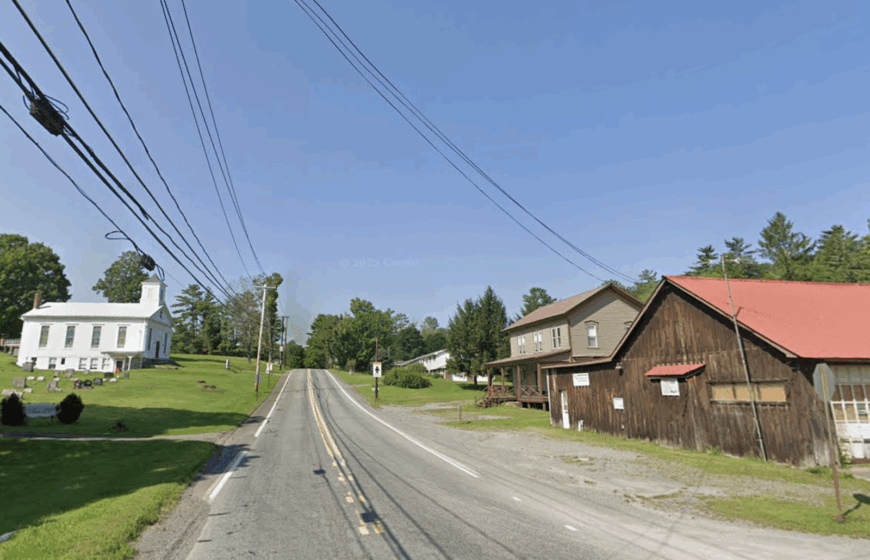
Damascus is a rural township with a population of about 3,500 spread out over a large area, which gives it a tranquil, spacious feel. I enjoy the gentle hills and expansive farmland that define its landscape, providing a serene environment far from urban centers.
Agriculture is a significant part of the local economy, along with small businesses that serve the community. The low traffic and large property lots contribute to its seclusion, making it ideal for those looking to escape the hustle and bustle.
The Delaware River adds to the scenic beauty and offers recreational activities like fishing and canoeing. For someone seeking peace in the countryside, Damascus offers a harmonious blend of open space and natural beauty.
Where is Damascus?
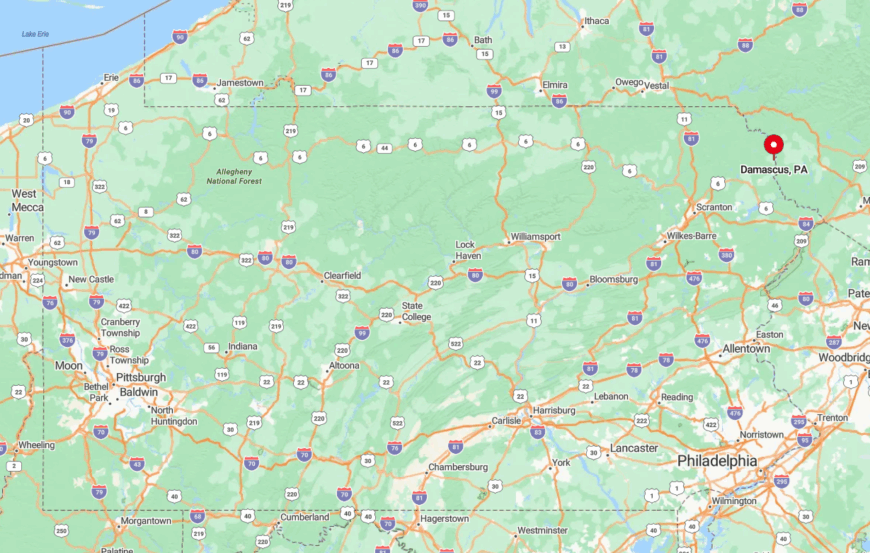
Situated in Wayne County, Damascus lies along the Pennsylvania-New York border, with the Delaware River marking its eastern edge. Its secluded character stems from its expansive area and distance from major highways and cities.
To reach Damascus, you might travel via PA Route 371 or Route 191, roads that wind through the picturesque countryside. The township’s sprawling nature means that even within its borders, you’ll find plenty of quiet, undisturbed places.
4. Starrucca: Woodland Escape
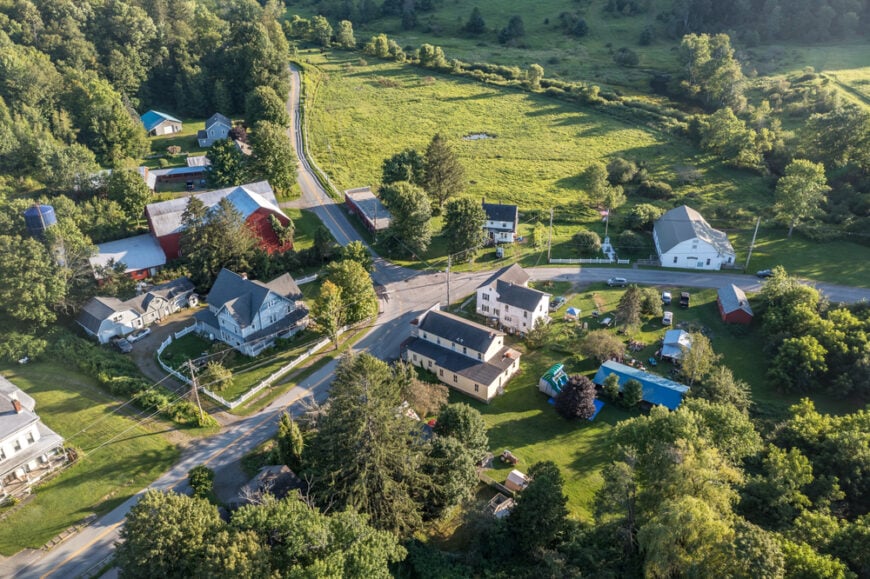
With a small population of around 200, Starrucca is a quiet borough set amidst lush forests and rolling hills. I find the minimal development here creates a perfect setting for those seeking a nature-filled lifestyle.
The town is surrounded by woodlands, making it a haven for wildlife and a paradise for outdoor enthusiasts who enjoy hiking and birdwatching. Industries are virtually non-existent, aside from some small-scale farming and forestry-related activities, which helps maintain its secluded character.
Starrucca’s namesake creek adds to the natural beauty, offering serene spots for fishing and relaxation. This woodland escape is ideal for anyone wanting to embrace the tranquility of Pennsylvania’s natural landscapes.
Where is Starrucca?
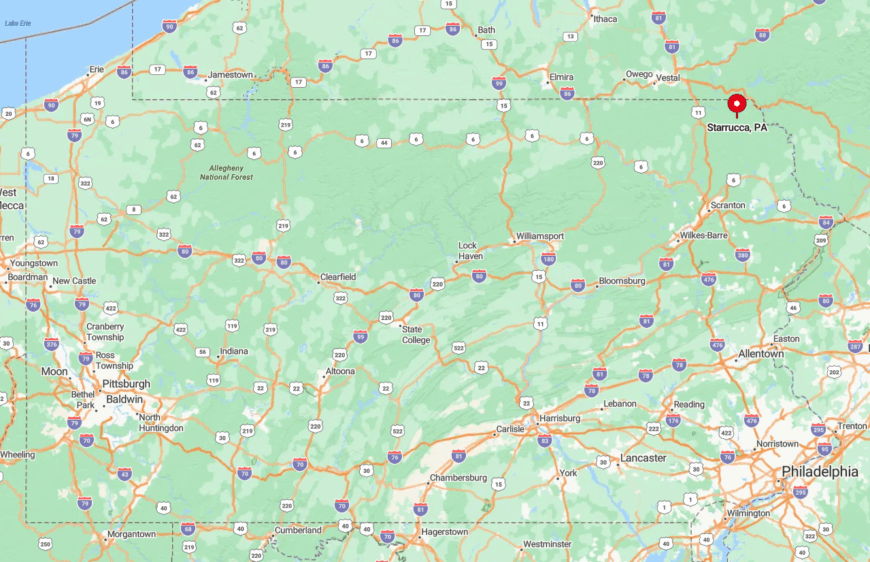
Nestled in Wayne County, Starrucca is off the beaten path, accessible mainly through winding country roads like PA Route 1009. Its seclusion is due to both its small size and the dense forests that envelop it, keeping it isolated from larger towns.
Getting to Starrucca often feels like a journey into the heart of nature, with scenic drives through wooded areas. This remoteness is what makes it so appealing to those looking to disconnect and immerse themselves in a peaceful environment.
3. Equinunk: Riverside Serenity
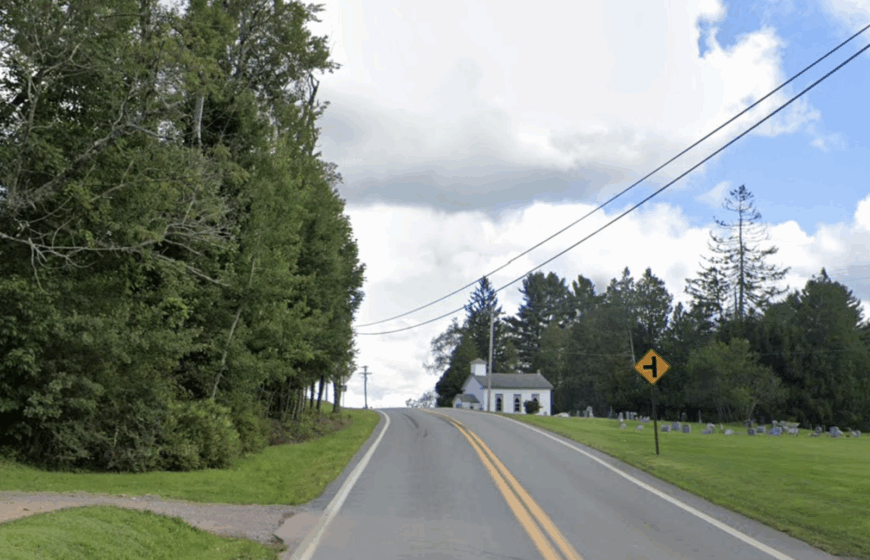
Equinunk is a quaint village with a population of roughly 1,500 spread across its rural landscape. Perched along the Delaware River, I appreciate the tranquil setting that this riverside community offers.
The sparse housing and abundant natural beauty make it a secluded escape, perfect for those who enjoy fishing, boating, and the peaceful ambiance of river life. Local industries are minimal, primarily consisting of small businesses and agriculture, which helps preserve the quiet atmosphere.
The town’s historic general store and the Equinunk Historical Society Museum are hidden gems that add to its charm without drawing large crowds. Equinunk’s serene riverside location provides a restful retreat away from the noise of the modern world.
Where is Equinunk?
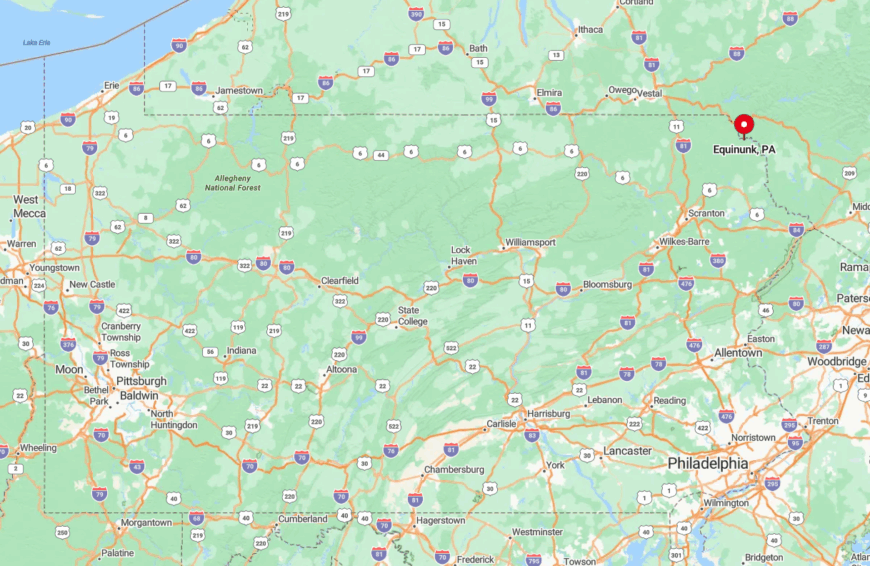
Located in Wayne County, Equinunk lies along the northeastern border of Pennsylvania, adjacent to New York. Its seclusion is due to its position along the river and the surrounding rural areas that keep it tucked away.
Access is primarily via PA Route 191 or Route 370, roads that meander through scenic landscapes. The journey to Equinunk is part of the appeal, leading you deeper into the tranquil countryside and away from hectic city life.
2. Pleasant Mount: Seclusion in the Highlands
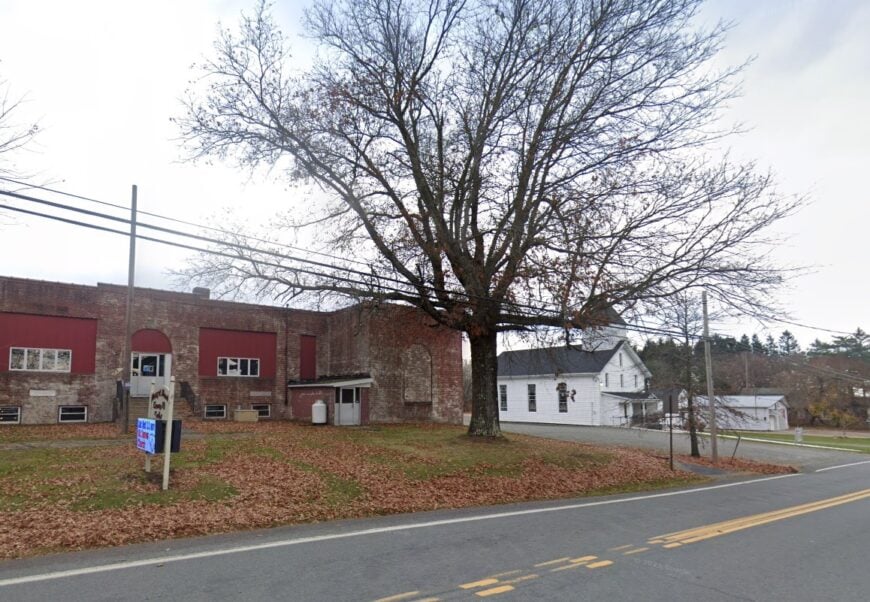
Pleasant Mount is a rural community with a population of around 1,400, set high in the rolling hills of Wayne County. What draws me to this area is its peaceful atmosphere and the large land parcels that provide ample privacy.
The main industries here include agriculture and some logging, which complement the natural surroundings. The elevation offers stunning vistas and a climate that’s a bit cooler than lower-lying areas, adding to its unique appeal.
Pleasant Mount’s seclusion is evident in its expansive landscapes and minimal development, making it perfect for a solitary retreat away from urban life. The lack of commercial distractions allows residents to fully embrace the serenity of highland living.
Where is Pleasant Mount?
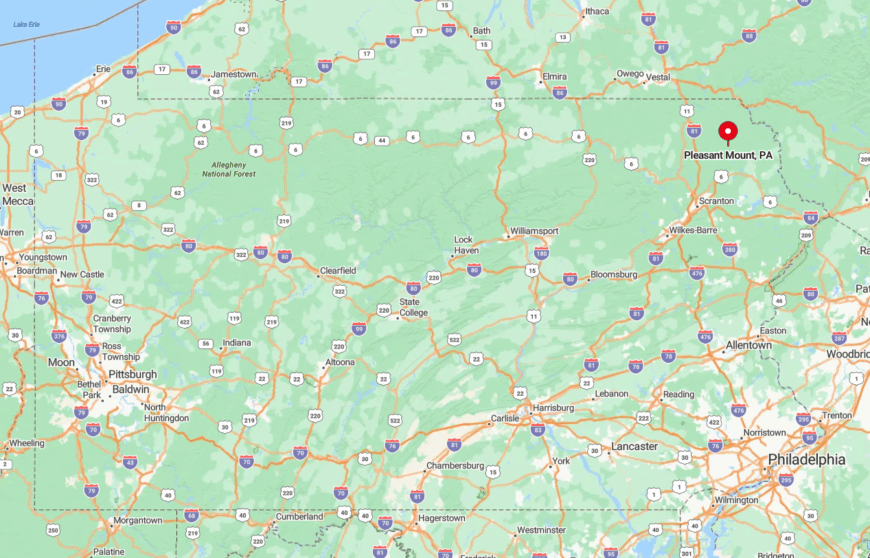
Situated in northeastern Pennsylvania, Pleasant Mount is accessible via PA Route 371, yet remains comfortably distant from major highways and cities. The town’s elevated position and the surrounding hills contribute to its secluded feel.
Reaching Pleasant Mount involves traversing scenic roads that rise into the highlands, offering breathtaking views along the way. This journey enhances the sense of escape, making Pleasant Mount a haven for those seeking solitude in a picturesque setting.
1. Lake Como: A Hidden Lakeside Haven
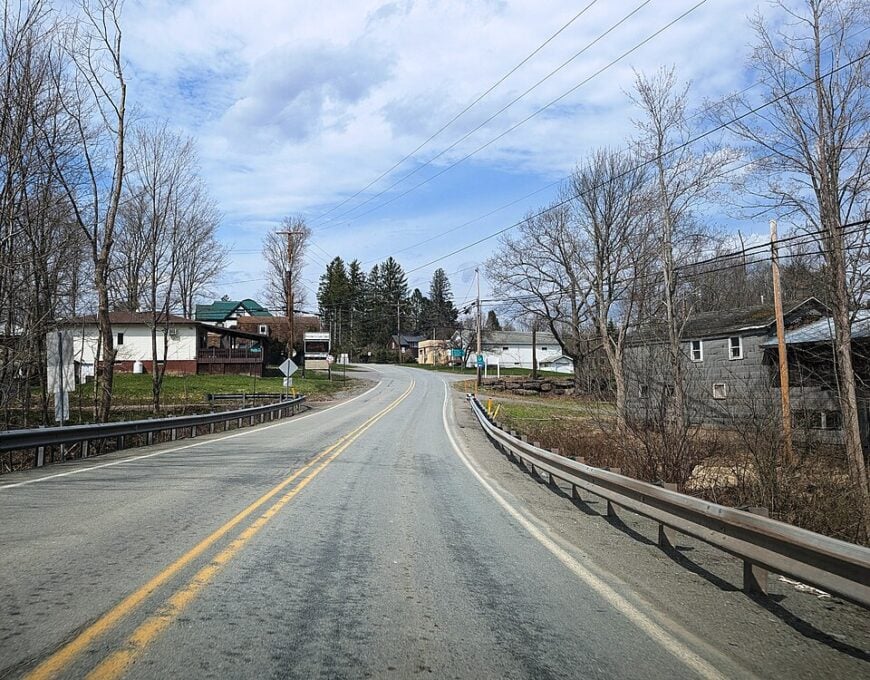
Lake Como is a small community of around 300 residents, nestled beside the tranquil waters of its namesake lake. I’ve always found this hidden lakeside haven to be the epitome of peaceful living, surrounded by dense forests and pristine water.
Most properties here are expansive, often spanning an acre or more, providing ultimate privacy for homeowners. The main industries revolve around tourism and outdoor recreation, with activities like fishing, boating, and hiking being popular among locals and visitors alike.
What makes Lake Como so secluded is its remote location and the dense woodlands that envelop it, creating a natural barrier from the outside world. The quiet atmosphere and close connection to nature make it an ideal spot for those seeking to immerse themselves in a serene environment.
Where is Lake Como?
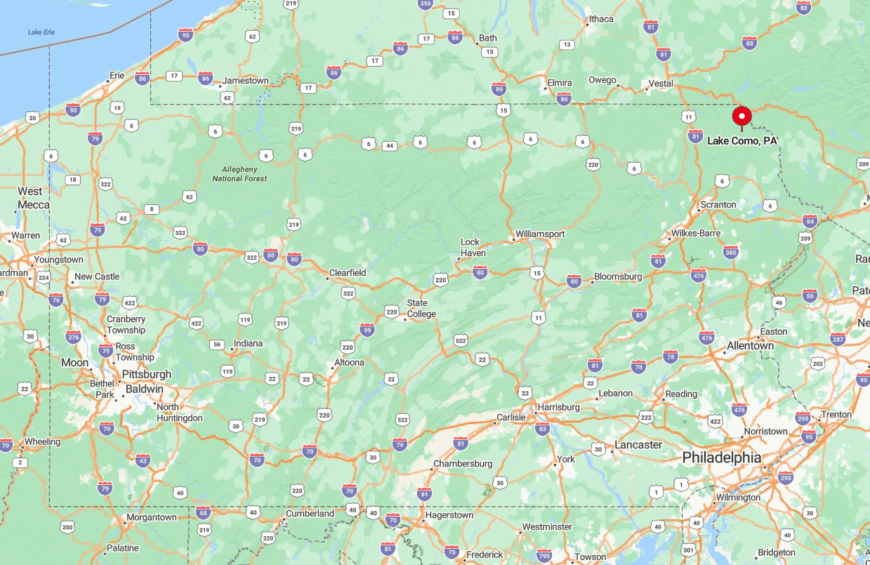
Located in Wayne County, Lake Como is tucked away in the northeastern corner of Pennsylvania. Its seclusion is enhanced by the surrounding forests and the absence of major roads nearby.
To reach Lake Como, you’d likely take PA Route 247 or Route 370, winding through the countryside until you arrive at this peaceful lakeside retreat. The journey through lush landscapes heightens the sense of seclusion, making Lake Como a perfect destination for a quiet getaway or a new place to call home.




